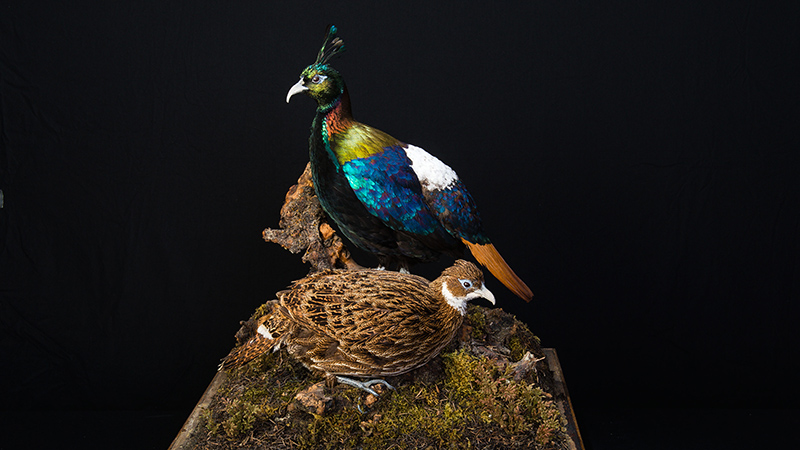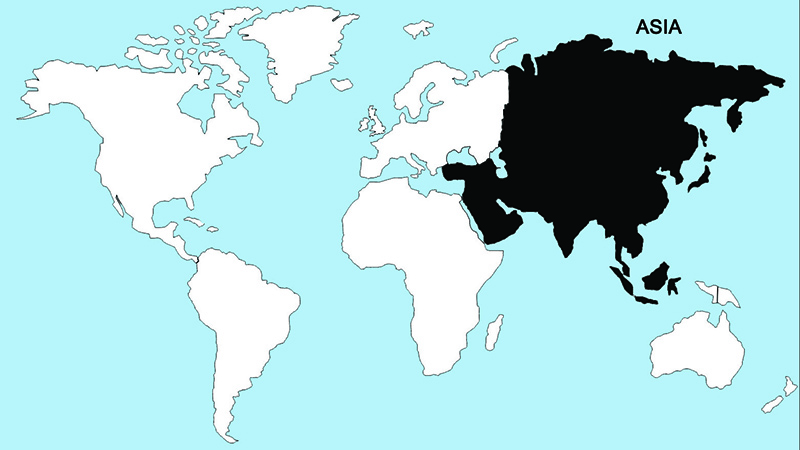Himalayan Monal

The Himalayan monal ranges from Afghanistan to Bhutan and Assam. It is one of the most highly iridescent and spectacular birds in the world, the adult male having so many shades of structural hues and pigmented colors that it is sometime called “the bird of seven colors.” Males stand very tall, with the feathers of the neck, the mantle, and the abdomen strongly fluffed. The beak is held upright and the birds step slowly and elaborately, moving the head as to make the crest vibrate and shimmer. When males are directing the display toward females they also arch the neck, bringing the crest forward, then call while raising the head and quickly lowering it again, causing the crest to vibrate violently. The male then pulls his head in toward the shoulders, with the beak against the upper breast, compresses the neck feathers and lowers the nearer wing. Then, with the primaries scraping the ground, he circles the female, leaning toward her and raising the farther wing so that it is visible across his back. The male also faces the female and lowers his head while standing erect, half-opening the wings, fluffing the neck feathers, and holding his tail high and fanned. His wings are slowly opened and partially closed, and the tail is slowly flicked up and down. In this posture the head is oriented so that the crest directly points toward the female and shaken, causing the crest to vibrate and shimmer.
Nests are placed in wooded habitats. Clutch sizes are most commonly of 4–5 eggs, with three-egg clutches also fairly common. The incubation period usually lasts 28 days, and in captivity females will often lay a second replacement clutch if the first is removed or unsuccessful.
Regions Birds Are Found

Collection Location & Year
U.S. - Utah 2000
Taxonomy
| Order | Galliformes |
|---|---|
| Family | Phasianidae |
| Tribe | Phasianini |
| Species | Lophophorus |
| Genus | impejanus |
Gender
Female & Male
References
- Beebe, C. W. 1918–1922. A Monograph of the Pheasants. London, UK:Witherby
- Cramp, S., and K. E. L. Simmons, eds. 1980. The Birds of the Western Palearctic. Vol. 2. (Hawks to Bustards) London, UK: Oxford Univ. Press.
- Johnsgard, P. A. 1986. The Pheasants of the World. Oxford, UK: Oxford Univ. Press.
- del Hoyo, J. A. Elliot, and J. Sargatal, eds. 1994. Handbook of Birds of the World. Vol. 2 (New World Vultures to Guineafowl). Barcelona, Spain: Lynx Editions.
- Johnsgard, P. A. 1999. The Pheasants of the World: Biology and Natural History. Washington, DC: Smithsonian Institution Press.